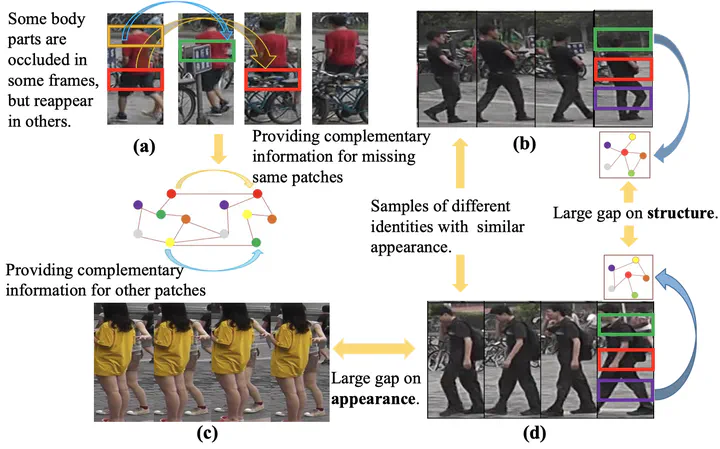Spatial-temporal graph convolutional network for video-based person re-identification

Abstract
While video-based person re-identification (Re-ID) has drawn increasing attention and made great progress in recent years, it is still very challenging to effectively overcome the occlusion problem and the visual ambiguity problem for visually similar negative samples. On the other hand, we observe that different frames of a video can provide complementary information for each other, and the structural information of pedestrians can provide extra discriminative cues for appearance features. Thus, modeling the temporal relations of different frames and the spatial relations within a frame has the potential for solving the above problems. In this work, we propose a novel Spatial-Temporal Graph Convolutional Network (STGCN) to solve these problems. The STGCN includes two GCN branches, a spatial one and a temporal one. The spatial branch extracts structural information of a human body. The temporal branch mines discriminative cues from adjacent frames. By jointly optimizing these branches, our model extracts robust spatial-temporal information that is complementary with appearance information. As shown in the experiments, our model achieves state-of-the-art results on MARS and DukeMTMC-VideoReID datasets.
Type
Publication
In Proceedings of the IEEE/CVF Conference on Computer Vision and Pattern Recognition